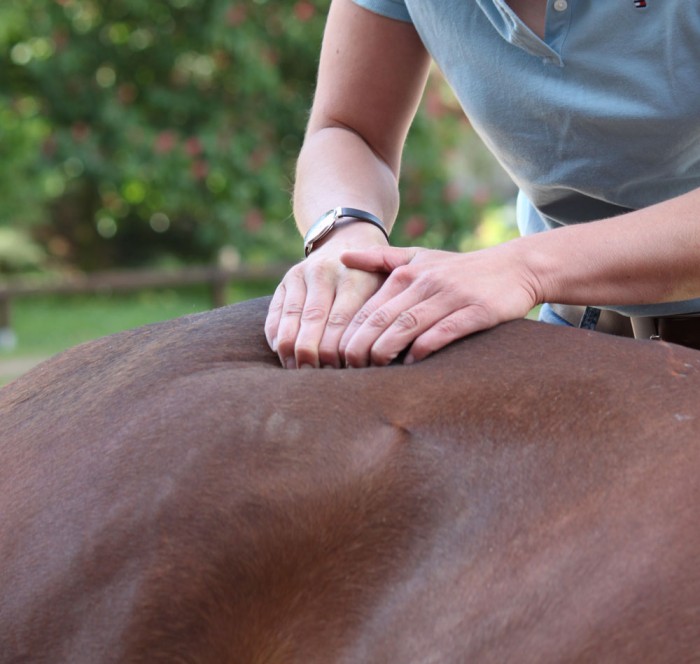
Effects of massage on athletic performance and muscle/tendon
Despite great clinical results in both humans and horses, sports- and triggerpoint massage have not been widely accepted. In medical professions, it’s effects are often labeled as merely ‘psychological’. But over the past few years we are beginning to get a greater understanding of the musculoskeletal system. The study discussed in this article provides us with scientific evidence of the positive effects of sports/triggerpoint massage performed on horses.
Triggerpoints are hyperirritable, painful areas which lead to lead to muscle stiffness, toxic waste build up, a decrease in range of motion (ROM) and blood flow. During the study eight horses were subjected to sports/triggerpoint massage performed by Jo-Ann Wilson. Direct pressure, cross-fiber friction and compression were the three different techniques used to target the supraspinatus , triceps brachii, biceps femoris caput longum and the gluteus superficialis.
Using a treadmill and a standardized protocol, change in ROM and stride frequency were measured. Ultra-sound was used to determine the change in the transverse diameter of the muscle belly and the muscle tendon junction. The average stride length in walk increased with 12,2 centimeters and trot 4,3 centimeters. Stride frequency in walking decreased with 4.6% and trotting 1.4%. Muscle belly increased most in diameter in the triceps brachii with 34% and 20% in the biceps femoris tendon.
This may conclude that there is evidence sport massage leads to acute and significant changes in anatomical and/or fluid status of muscle tissue. This may ultimately lead to improvement in ROM and decrease in stride frequency.
> From: Wilson, Massage therapy journal (2017) 90 - 100. All rights reserved to the author(s). Click here for the online summary.


